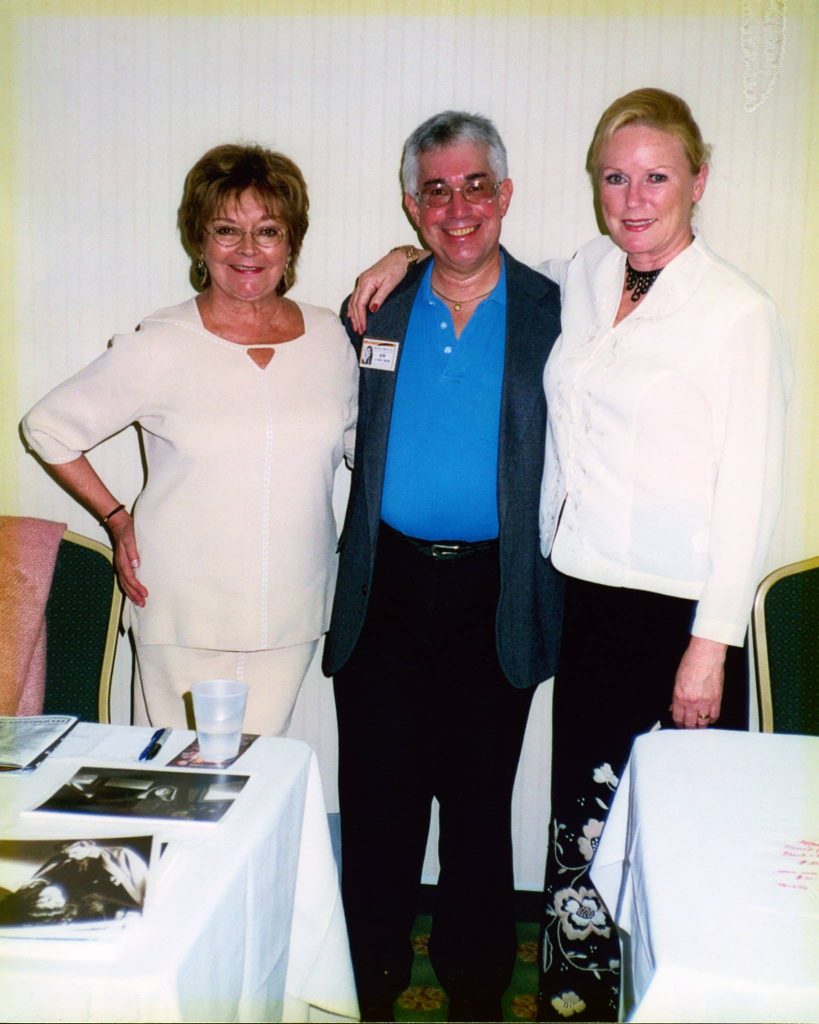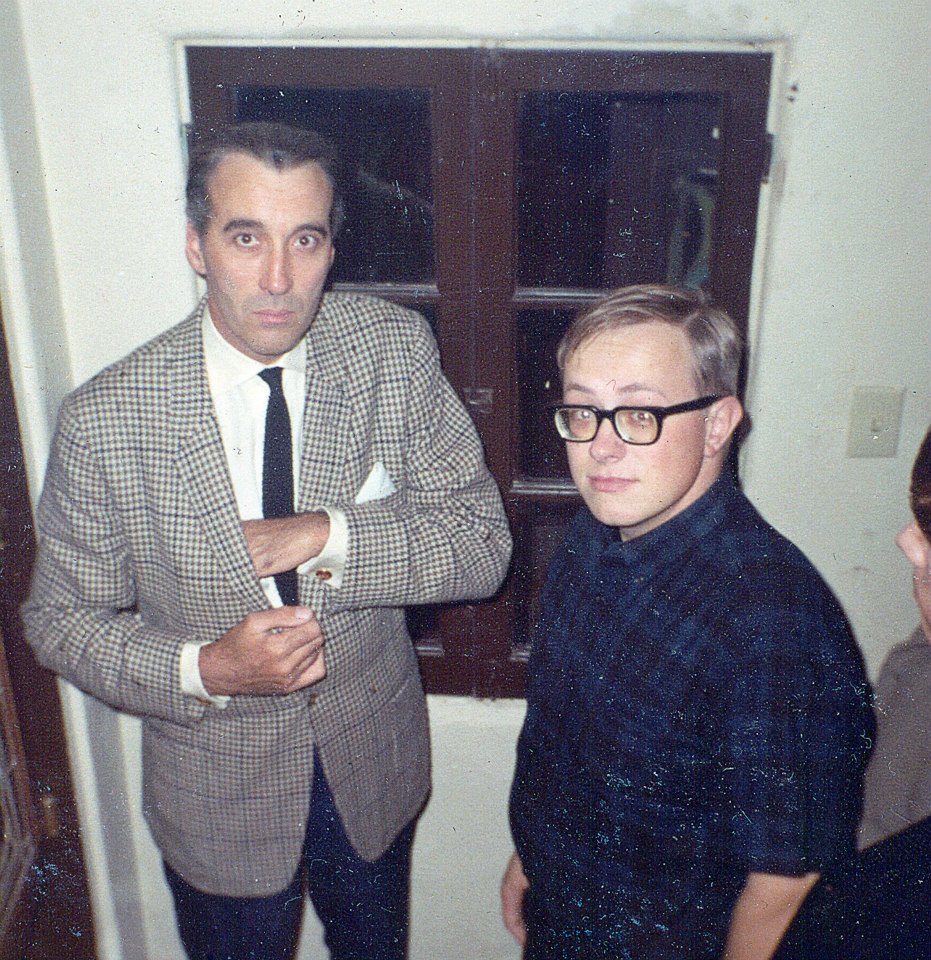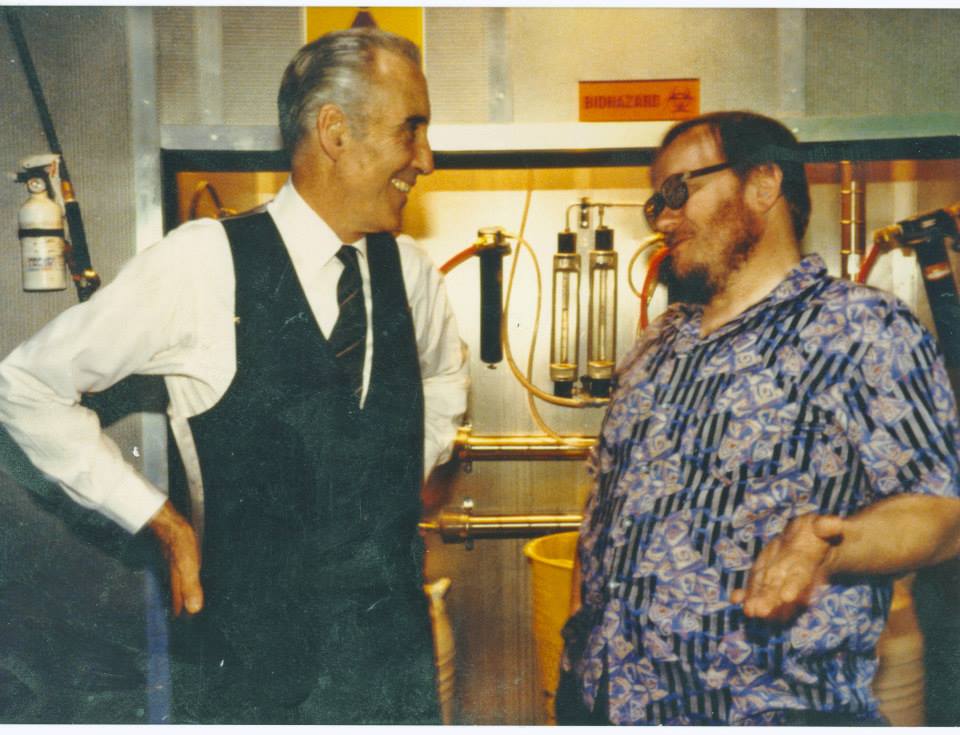Praise, complaints and tales of derring-didn’t fill the Scroll today.
(1) George Barr, Fan Guest of Honor at MidAmeriCon, the 1976 Worldcon, unexpectedly popped up in a soft-sell blog entry for PR firm Signal Hill, “Science Fiction Illustrator Finds Home” —
Barr’s art, often marked by a distinctive watercolor-over-ballpoint pen technique, illustrated science fiction magazines for decades, including the covers of “Amazing Stories,” “Fantastic Stories” and “If.” Barr also brought books to life through his work with publishers like DAW Books and Ace Books.
Prior to compiling this impressive resume, Barr did a great deal of free work for “fanzines,” non-professional publications popular in the science fiction world. Not only did it help build his portfolio, but it was a way to get his illustrations out, he says. The work even earned him a Hugo Award for best fan artist at the World Science Fiction Convention in 1968.
Barr earned these achievements with only one formal art course under his belt. Though he says he learned a lot about color, harmony and composition, the emphasis on commercial art did not play toward his interests. The freedom of the fantasy genre spoke to him most, he says.
“There was absolutely nothing you could imagine that could not occur,” says Barr of the genre. “You can conceivably be drawing anything that ever existed or might.”
Barr is 78 and has good things to say about the retirement community where he lives.
(2) Was the late Christopher Lee’s illustrious war record a complete fabrication? The Daily Mail writer who penned Lee’s obituary is now deconstructing his claims.
Until the end of the war, the man who would be Dracula served with the air force as an intelligence officer, briefing and debriefing pilots, and liaising with other units.
It was during this time that he claimed to have served in some way with the Long Range Desert Group and the SAS.
As Gavin Mortimer has shown, there is simply no evidence to support this. Lee may have worked alongside these units in some way, but he was emphatically not a part of them.
‘Lee didn’t exactly lie,’ says Mortimer. ‘But he did lead us on, encouraging us to believe [his job] had involved more derring-do than it actually did.’
In an interview he gave to Belgian television to promote Lord Of The Rings, Lee claimed also to have served with a small special forces organisation called No 1 Demolition Squadron, better known as Popski’s Private Army (PPA) after its charismatic leader Major Vladimir Peniakoff.
Like the Long Range Desert Group and the SAS, the PPA was a raiding and reconnaissance unit, and its exploits are venerated by many.
Again, there is no hard evidence to support Lee’s claim that he worked with the PPA.
(3) It’s not so much the complaints about Comic-Con that drew me to Heidi MacDonald’s roundup of what the convention’s critics had to say, but what she revealed in passing about the support other cons give to fans with disabilities, which far exceeds anything I see at the cons I attend:
There were many complaints about Hall H this year as always. Was it different? Not sure. I do know at least one person told me he got in and found many empty seats inside while a huge line was still waiting to get in, but that could be due to safety measures for crowd control. I would like to draw your attention to this post by Nick Eskey on the Talk Back panel and the subsequent comment threads as it deals with disabled attendees and the line wait. While to some hearing a fellow complain about not having a place to plug in his CPAP machine while waiting for Hall H may seem the height of folly, but you know, physically challenged fans have the same right to experience whatever it is they want out of Hall H as anyone else.
This is that guy that only slept 16 hours and needed his CPAP machine. You apparently only caught part of what I was saying, which is, that if they had not removed the outlets I could have used my CPAP machine and slept outside just fine. Besides that, however, you missed the point completely which is not everyone with disabilities can sleep outside. Because of that they should be given special consideration for their placement in line. What other convention gives ADA this sort of consideration? Try Emerald City Comic Con and PAX Prime, both in Seattle and both allow ADA to ALWAYS be first in line. Try DragonCon in Atlanta, where ADA have volunteers that will guide them through the convention, hold their spot in line and generally assist them in whatever way needed. I was on the BoD for OkCon and we bent over backwards to assist our ADA. Maybe because we had people on the board with disabilities.
And there’s even more in the Nick Eskey post she links to.
(4) On the other hand, fans are responding skeptically to a blogger’s complaint to SDCC management that the nine-year-old Who fan in his party was traumatized by the horror-oriented displays near the items they went to see. I wouldn’t be so quick to dismiss the complaint myself. As the parent of a 13-year-old, I have discovered my former ideas of what’s okay for kids were pretty out-of-touch.
I attended SDCC this year as part of a larger group. One of our party, a nine-year-old, is a HUGE Whovian (we are a large Whovian family), so the first day at the convention we immediately made our way to the BBC America booth for Doctor Who merchandise, photo ops, and chatting with the BBC America representatives onsite about Doctor Who and upcoming events. We found that the booth was sandwiched between a booth for AMC’s The Walking Dead and Starz’s upcoming series Ash vs Evil Dead. Though problematic on its own, we were extra upset to find that both horror booths had their walls covered in TVs playing, on loop, terrifying clips of zombie horror (The Walking Dead) and absurdly gory violence (Ash vs Evil Dead), of which the latter’s level of violence I, even as a 24 year old man, actively avoid because it’s an anxiety trigger to me.
That night our 9 year-old woke up screaming with nightmares about zombies attacking her, and the next day she burst into tears when we tried to enter the con floor (despite the fact that we were far from the horror booths). For the rest of the con, while we were able to get her onto the con floor without a meltdown, we had to make a wide berth around the BBC America booth because of its proximity to the Walking Dead and Ash vs Evil Dead booths, which was secondarily upsetting for her because she was previously extremely excited to be near the Doctor Who things (especially the TARDIS set up at the Hollywood Sci-Fi Museum booth, also placed next to the Ash vs Evil Dead booth – she wanted to take her photo with the TARDIS so badly).
…Thank you so much for all that you do to organize and present this convention every year. Beyond this, we had very little issues with the rest of the con and overall had a great time. It’s simply unfortunate that the experience was marred by the emotional trauma inadvertently caused to our child stemming from the placement of BBC America’s booth between two of the biggest horror booths at the convention.
(5) John King Tarpinian says Mystery & Imagination Bookshop in Glendale is getting a lot of people wanting to buy reading copies of To Kill a Mockingbird, which led to a surprising discovery. “They are running out of paperback reading copies. A good customer says she wants a copy, the bookshop has one paperback left but Malcolm remembers that Christine paid $2 for a 40th anniversary hardback the other day and figures he’d be nice by offering it to the customer for $5 when she comes in. Malcolm, as is his habit, opens the book to discover it is SIGNED by Harper Lee. This is how a $2 book becomes a $1000 book.”
(6) While analyzing how the Hugos fit into contemporary fandom, Karl-Johan Norén points out that everyone thinks he/she is at the center of fandom.
(Ur-)Fandom came to Sweden in the 1950s. In the early 70s Tolkien societies evolved here from it, in many ways similar to SCA in the United States. The ties between the Tolkien societies and fandom in Sweden are still strong, and we can mingle relatively easily. However, media fandom, cosplay, LARP, and lots of other stuff were direct imports from the United States. Here the cultural differences are much larger and more profound. Partly this is because of the direct import, partly this is because Swedish fandom after the disastrous feuds of the 80s closed in on itself and very much focused on the core of discussing science fiction as books.
Put another way, the splinter lines within all the various off-shoots, special fandoms, and so are much easier to see here in Sweden. But the same tendencies are very much present in the United States, I imagine.
Another thing which has happened, from the 90s forward, is that the Internet has made it much easier to set up special interest groups that can gain critical size and connectivity. Baen’s Bar is one early such example, but there are many more nowadays.
So which of these disparate groups do the label “fandom” belong to nowadays? All of them. However, there is a tendency to use the word “fandom” as a shorthand for “the specific fannish group that I happen to be a member of”. I believe this is especially true within “core” fandom, the one that evolved around the pulp magazines in the 20s and 30s, with a primary interest in written science fiction. Historically, I think that movement can claim having first dibs on the label, but it helps to remember that fandom nowadays is much bigger and diverse than “core” fandom is.
(7) And as a kind of postscript, here are John Scalzi’s, Cheryl Morgan’s and Fred Kiesche’s tweets inspired by the report Michael Z. Williamson is voting No Award in every Hugo category.
https://twitter.com/FredKiesche/status/622024711023788033











